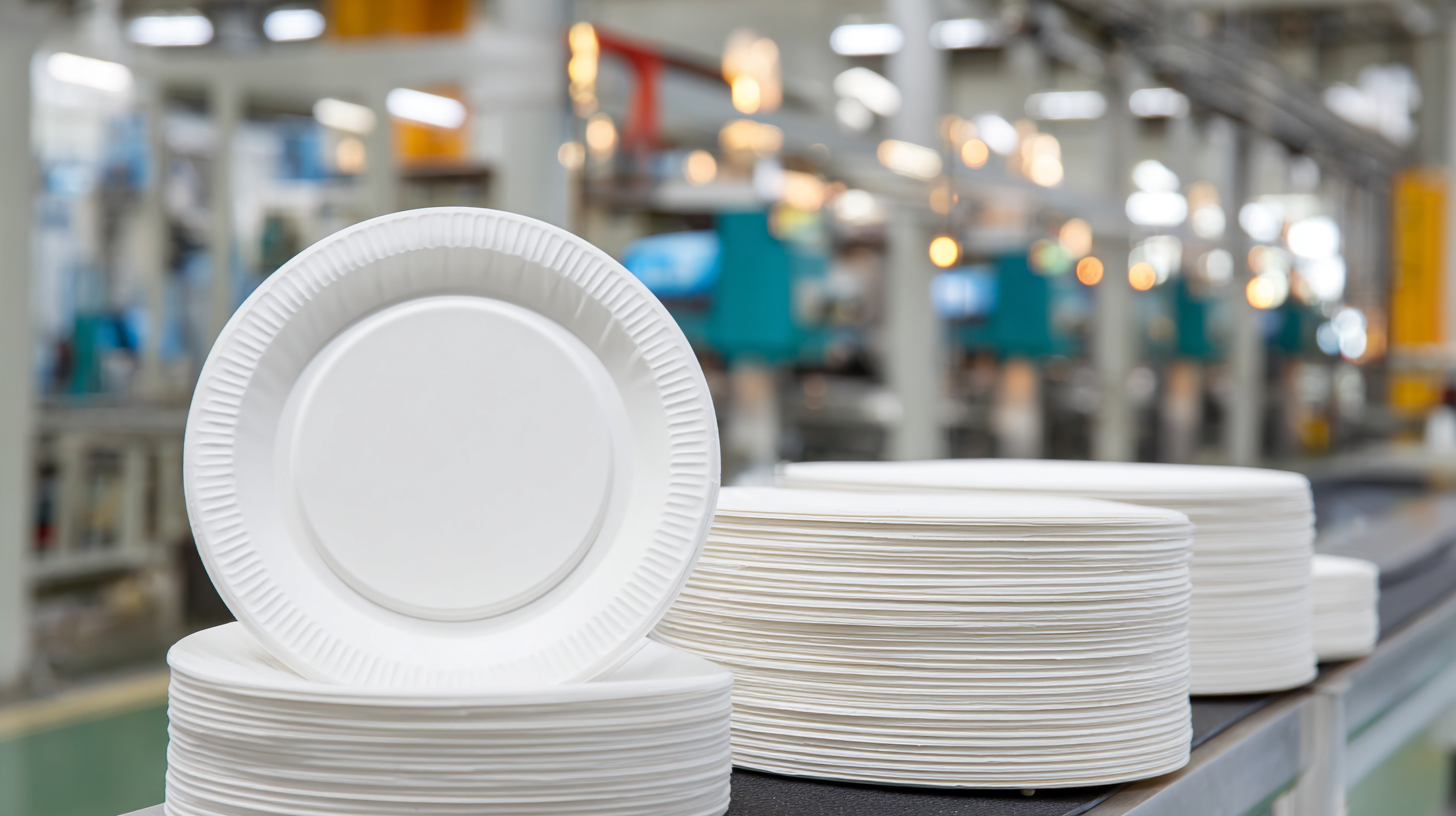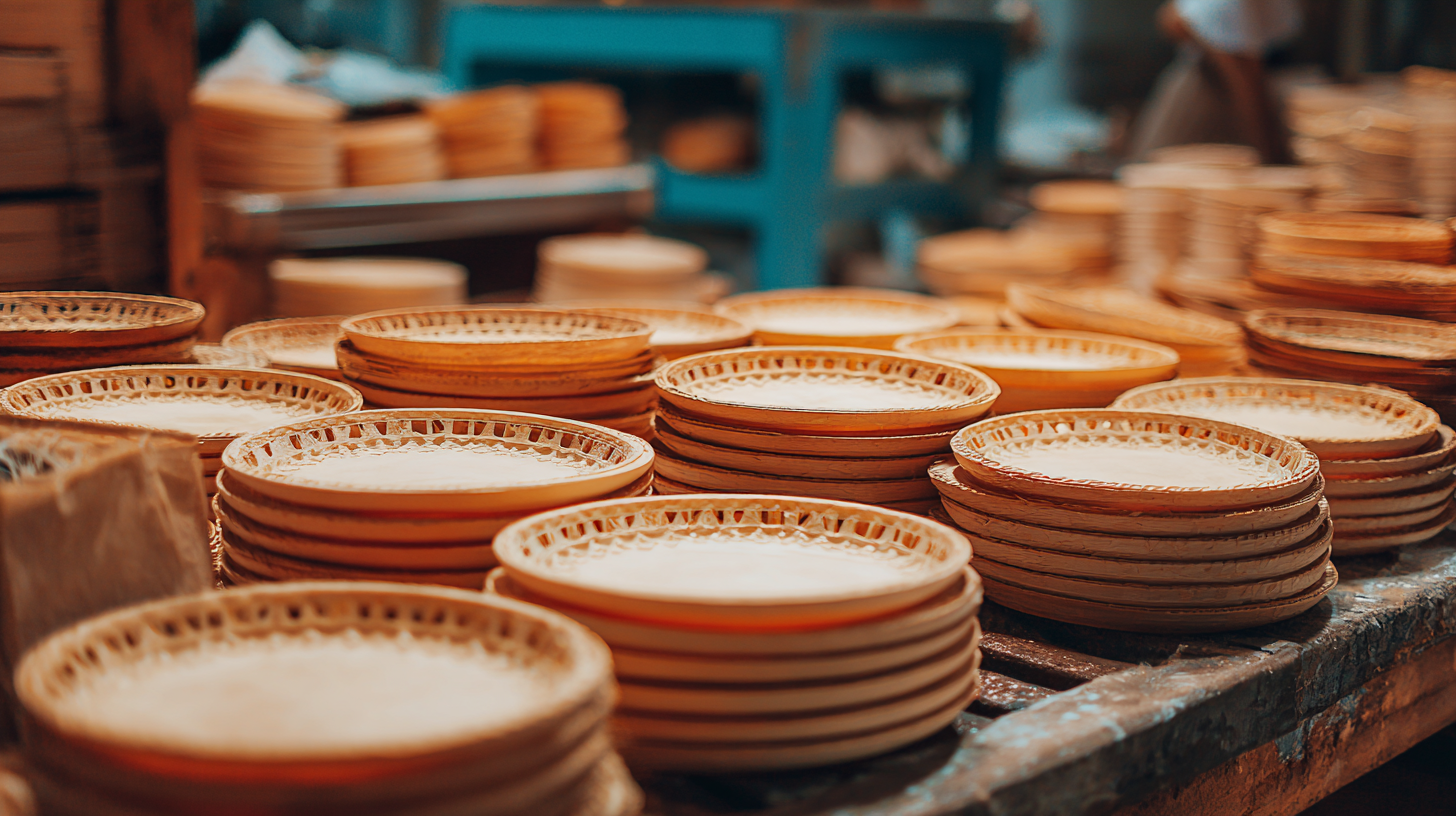Leave Your Message
In recent years, the demand for Microwave Paper Plates has surged globally, driven by the increasing prevalence of convenience-oriented lifestyles and environmental concerns. According to a recent market research report, the global disposable tableware market is expected to reach USD 18 billion by 2027, with Microwave Paper Plates holding a significant share due to their eco-friendly appeal and functionality in modern food service.

China stands at the forefront of this market, leveraging its robust manufacturing capabilities to export high-quality Microwave Paper Plates worldwide. With a combination of innovative design and sustainable materials, Chinese manufacturers are not only meeting international standards but are also addressing the growing consumer preference for biodegradable products. As the world shifts towards greener alternatives, the role of Chinese production in the Microwave Paper Plates market becomes increasingly critical, showcasing a commitment to quality and sustainability as a cornerstone of global exports.
The rise of microwave paper plates marks a significant shift in the food service industry, offering convenience and sustainability for modern dining. As food delivery services gain traction, microwave paper plates provide an ideal solution for quick meal consumption without sacrificing quality. According to industry reports, the global market for disposable food packaging, including microwave-safe options, is expected to reach $500 billion by 2024, reflecting a growing preference for easy-to-use, eco-friendly products.
Innovative cooking hacks further complement the appeal of microwave paper plates. For instance, recent findings highlight how cooking bacon in the microwave can be done in just 45 seconds, representing a drastic reduction in preparation and cleanup time, without the greasy aftermath of traditional frying. Similarly, users are discovering 'game-changing' methods for cooking fried eggs in under a minute. These time-saving techniques align perfectly with the functionality of microwave paper plates, which allow for quick heating and easy disposal, thus enhancing the overall dining experience. As consumers become more health-conscious and efficiency-driven, the demand for microwave paper plates is likely to continue its upward trajectory, making them indispensable in the food service sector.

In today's highly competitive market, the focus on quality assurance in manufacturing has never been more critical, especially for products like microwave paper plates. As the demand for convenient and eco-friendly food packaging rises, manufacturers in China are committed to not only meeting but exceeding international quality standards. Rigorous inspection processes are essential to ensure that every batch of microwave paper plates is free from hazardous substances and meets safety regulations. This commitment to quality is further exemplified by advances in non-destructive testing methods, which allow for precise quality assessment of materials without compromising their integrity.

Moreover, recent investigations into contamination in paper products have highlighted the need for transparency and thorough testing. Specifically, concerns surrounding per- and polyfluoroalkyl substances (PFAS) have raised questions about the safety of food contact materials, particularly when exposed to high temperatures. Manufacturers are increasingly adopting safer materials and practices, ensuring that their microwave paper plates not only preserve food quality but also protect consumer health. By prioritizing both production excellence and rigorous quality assurance, Chinese manufacturers are setting a benchmark for the global market and fostering trust among consumers worldwide.
The manufacturing of microwave paper plates has undergone significant transformation in recent years, with a strong emphasis on sustainable practices. Eco-friendly innovations are at the forefront of production, ensuring that these plates are not only functional but also minimize environmental impact. Manufacturers in China are embracing renewable materials and adopting advanced technologies to create plates that are biodegradable and free from harmful chemicals. This shift not only addresses consumer demand for sustainability but also meets global environmental standards.
One of the key innovations includes the use of plant-based coatings that enhance the durability of microwave paper plates without compromising their eco-friendly nature. These coatings provide resistance to heat and moisture, allowing for efficient use in food preparation while being entirely compostable after disposal. Furthermore, manufacturers are investing in energy-efficient processes, significantly reducing carbon footprints throughout the production cycle. As a result, Chinese manufacturers are positioning themselves as leaders in sustainable packaging solutions, exporting high-quality, eco-friendly microwave paper plates to markets worldwide.
This chart displays the trends in the export of microwave paper plates from China to various regions over the last five years, showcasing a significant shift towards sustainable production practices.
China's position as the leading exporter of paper plates is driven by multiple factors that showcase its global demand and manufacturing strength. As the world shifts towards sustainable food service solutions, biodegradable paper plates have emerged as a preferred choice in various markets. This trend aligns with the increasing environmental consciousness among consumers and businesses alike. China, having invested in the production capabilities and technologies required to meet this growing demand, is well-positioned to fulfill the needs of international customers.
Significant bulk ship orders and robust export infrastructure further enhance China's dominance in the global paper plate market. Despite various challenges in the international trade arena, including tariffs and competitive pressures from other countries, China's manufacturing sector remains resilient. The ability to offer high-quality products at competitive prices ensures that Chinese paper plates continue to find their way into markets around the globe, meeting the escalating demand for eco-friendly alternatives in the foodservice industry.
In the rapidly evolving global marketplace, seamless logistics play a crucial role in delivering quality microwave products from China to international markets. The global microwave food packaging market is projected to grow at a CAGR of 5.2% from 2021 to 2028, driven by increasing consumer demand for convenience foods. With China being the world’s largest producer of microwave-safe paper plates, ensuring efficient logistics is paramount to maintain this competitive edge.
To optimize the delivery of these products, manufacturers are adopting advanced technologies such as IoT and AI-driven supply chain solutions. A recent report by Armstrong & Associates highlights that companies utilizing integrated logistics strategies see a 15-20% reduction in shipping times, significantly improving customer satisfaction. Alongside this, robust partnerships with global freight carriers enable faster customs clearance and reduce lead times. As manufacturers enhance their logistics capabilities, they are not only improving efficiency but also enabling access to emerging markets where the demand for eco-friendly microwave products is surging.
| Product Type | Size (inches) | Material | Heat Resistance (°C) | Export Region | Monthly Production Volume |
|---|---|---|---|---|---|
| Microwave Paper Plate | 9 | Compostable Paper | 200 | North America | 100,000 units |
| Microwave Paper Bowl | 12 | Coated Paper | 180 | Europe | 80,000 units |
| Microwave Safe Tray | 10 | Bamboo Fiber | 220 | Asia | 60,000 units |
| Microwave Paper Plate | 7 | Recycled Paper | 190 | Australia | 50,000 units |
| Microwave Paper Bowl | 16 | Sugarcane Bagasse | 210 | South America | 70,000 units |
